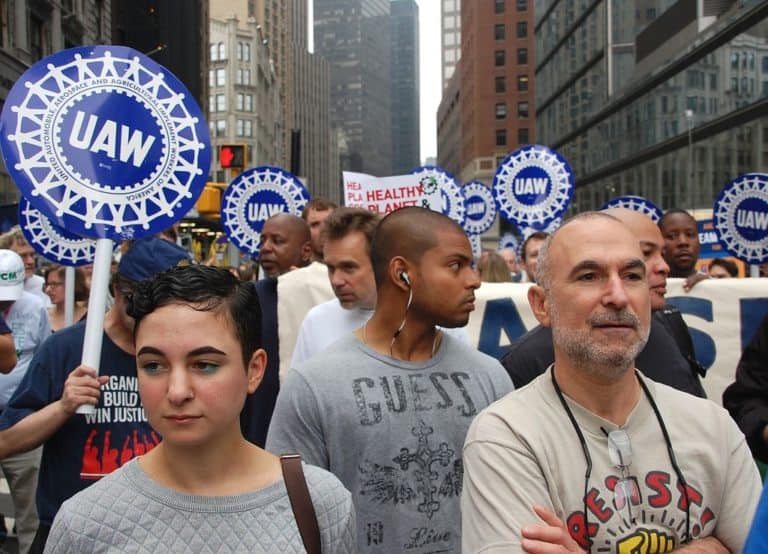Rachel Arnow-Richman is a Professor of Law and the inaugural Gerald A. Rosenthal Chair in Labor & Employment Law at University of Florida's Levin College of Law. She was previously the Chauncy Wilson Memorial Research Professor and Director of the Workplace Law Program at the University of Denver, Sturm College of Law.

Dr. David Doorey is an Associate Professor of Labor and Employment Law at York University in Toronto.
Noncompete reform is currently the rage in the United States. In recent years, numerous states have enacted laws limiting the reach of these agreements and proscribing their use with low-wage workers. Yet Ontario — Canada’s largest province — blew past its southern neighbor when it enacted an all-out ban on employee noncompetes late in 2021. Although bans have been introduced in the United States, only the District of Columbia has adopted one, and no other jurisdiction is poised to follow.
Yet the Ontario ban may have less practical effect than more modest reforms enacted stateside. The reason is a divergence in how each country has interpreted their common law. Both the United States and Canada apply a version of the English “rule of reason,” which treats restraints as presumptively void subject to limited exceptions. The Supreme Court of Canada has ruled that an employer seeking to uphold a noncompetition clause must satisfy four conditions:
- a real proprietary interest is at stake and the clause is not just an attempt to restrict competition;
- the restriction is reasonable as to geography and time;
- there is no less-restrictive measure that could be taken to protect the employer’s interests, such as a nondisclosure or nonsolicitation clause; and
- the clause is clear and unambiguous.
In the United States, four jurisdictions refuse to enforce noncompetes and a handful have statutes that refine the common law in specific ways. But the baseline common law is similar: in states that allow them, the employer must demonstrate that the noncompete is necessary to protect a legitimate interest; that it is reasonable in scope; that it adheres to contract formalities; and, in some cases, that the agreement is not unduly harmful to the public.
The difference lies in how the two countries have applied these principles. In Canada, the courts have emphasized the imbalance of power that usually permeates the employment relationship and have therefore looked at noncompetes with a high level of suspicion. The relatively rare cases in which they have been upheld usually involve salespeople with relationships with key clients (protection of a “book of business”) or high-level executives and senior employees who agree to noncompetes in the context of a sale of business in order to protect the purchaser’s value in the business. In the United States, courts have historically been more deferential to employers. Unlike in Canada, they will rewrite overbroad noncompetes to make them reasonable, and most have taken a more capacious view of what justifies a restraint. Although neither jurisdiction would likely enforce a noncompete against a low-wage retail worker — the type of agreement that has garnered media attention — U.S. courts are more willing to defer to employers’ view of their proprietary interests. This includes recognizing a nebulous category of “confidential” information that justifies a noncompete, despite falling outside the scope of trade secret law.
Yet there is one thing the countries have in common: a gap between law and practice. The reality that most noncompetition clauses found in Canadian employment contracts would, if tested, be struck down by the courts has not prevented employers from including them. Similarly, in the United States, employers sometimes include unenforceable contract clauses in the expectation that most employees will abide by them regardless. Research shows that the incidence of noncompetes in California, a state well known for its strong stance against anticompetitive restraints, is not significantly different than in enforcing jurisdictions.
This divergence has competing implications for the political economy of regulation. With an election coming this summer, the right-leaning Ontario Progressive Conservative Party, which enacted the noncompete ban, is rebranding the party as a friend of labor. The ban on noncompetition clauses supports this objective, as well as the government’s goal of attracting technology workers to the province, while costing minimal political capital. Since employers understand that most noncompetes are unlawful anyway, and labor activists are pushing for much more substantive reforms to assist precarious workers, the pushback from the business lobby against the prohibition on noncompetes has been muted. Among those in the know, the law is perceived mostly as a codification of the present common law in Canada.
The flip side is that the new law may shine a light on unlawful noncompetes that would otherwise fly below the radar. In an environment where most employees are understandably unaware of the judiciary’s stance on these agreements, employers can impose them despite the law, reaping the benefit of their in terrorem effects on unassuming workers. Publicity around the Ontario statute — thanks in part to the Progressive Conservative Party publicly touting its role — can alert employees to their rights, empowering them to disregard or reject these agreements. The new law makes it unlawful to include a noncompete clause in an employment contract and imposes direct consequences on employers who misuse noncompetes, including the potential for heavy fines against a corporation that violates the law.
Although the prospects for additional noncompete bans in the United States are slim, states can still learn from Ontario as they pursue less radical initiatives. One takeaway is that even modest adjustments to the noncompete enforcement regime can be valuable if they help bridge the gap between popular perception and legal reality. The many recent U.S. laws that void noncompetes for only low-wage workers may serve that purpose. But for these laws to be effective, workers must know about them. The Ontario law includes a requirement that employers provide employees with a poster explaining some basic labor standards that will presumably now include a sentence on noncompetes. Even better is direct notice to employees regarding the nonenforceability of noncompete clauses. The Uniform Law Commission’s recently adopted Restrictive Employment Agreement Act (UREAA), for instance, requires employers to provide an advisory document explaining the limited enforceability of noncompetes when requesting them from employees.
Legislation can also provide a means of improving employer compliance by adequately penalizing abuse. A few recent U.S. initiatives establish fines for employer violation, but none are as substantial as Ontario’s, which provides for fines up to $500,000. Yet these will be effective only if regulating authories investigate and aggressively pursue employer violations. A private right of action could prove a better deterrent. UREAA and some recent U.S. laws take this approach.
Finally, Ontario’s new law illustrates the potential for bipartisan support for noncompete reform. Regardless of the Ontario government’s political motivations, the passage of Bill 27, Working for Workers Act, 2021, demonstrates that eliminating (or at least reducing) contractual limits on employee mobility can be good for the economy as well as for workers.










Daily News & Commentary
Start your day with our roundup of the latest labor developments. See all
July 11
Regional director orders election without Board quorum; 9th Circuit pauses injunction on Executive Order; Driverless car legislation in Massachusetts
July 10
Wisconsin Supreme Court holds UW Health nurses are not covered by Wisconsin’s Labor Peace Act; a district judge denies the request to stay an injunction pending appeal; the NFLPA appeals an arbitration decision.
July 9
In Today’s News and Commentary, the Supreme Court green-lights mass firings of federal workers, the Agricultural Secretary suggests Medicaid recipients can replace deported farm workers, and DHS ends Temporary Protected Status for Hondurans and Nicaraguans. In an 8-1 emergency docket decision released yesterday afternoon, the Supreme Court lifted an injunction by U.S. District Judge Susan […]
July 8
In today’s news and commentary, Apple wins at the Fifth Circuit against the NLRB, Florida enacts a noncompete-friendly law, and complications with the No Tax on Tips in the Big Beautiful Bill. Apple won an appeal overturning a National Labor Relations Board (NLRB) decision that the company violated labor law by coercively questioning an employee […]
July 7
LA economy deals with fallout from ICE raids; a new appeal challenges the NCAA antitrust settlement; and the EPA places dissenting employees on leave.
July 6
Municipal workers in Philadelphia continue to strike; Zohran Mamdani collects union endorsements; UFCW grocery workers in California and Colorado reach tentative agreements.